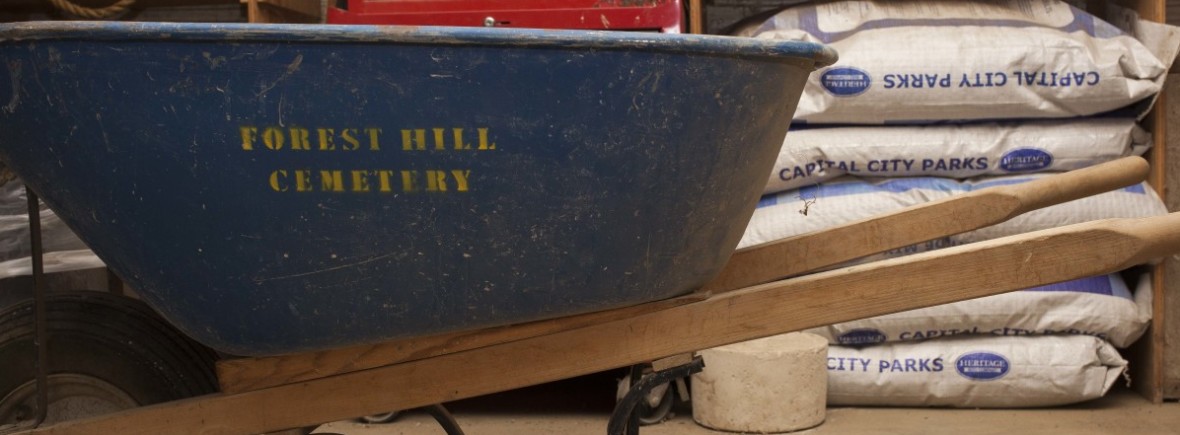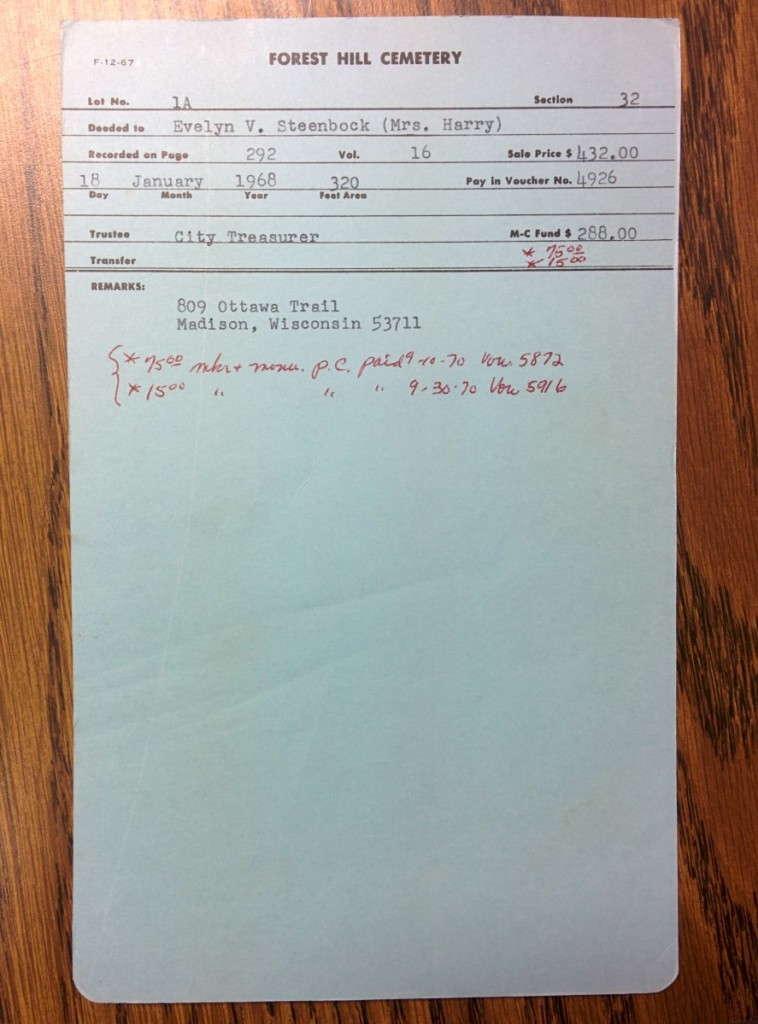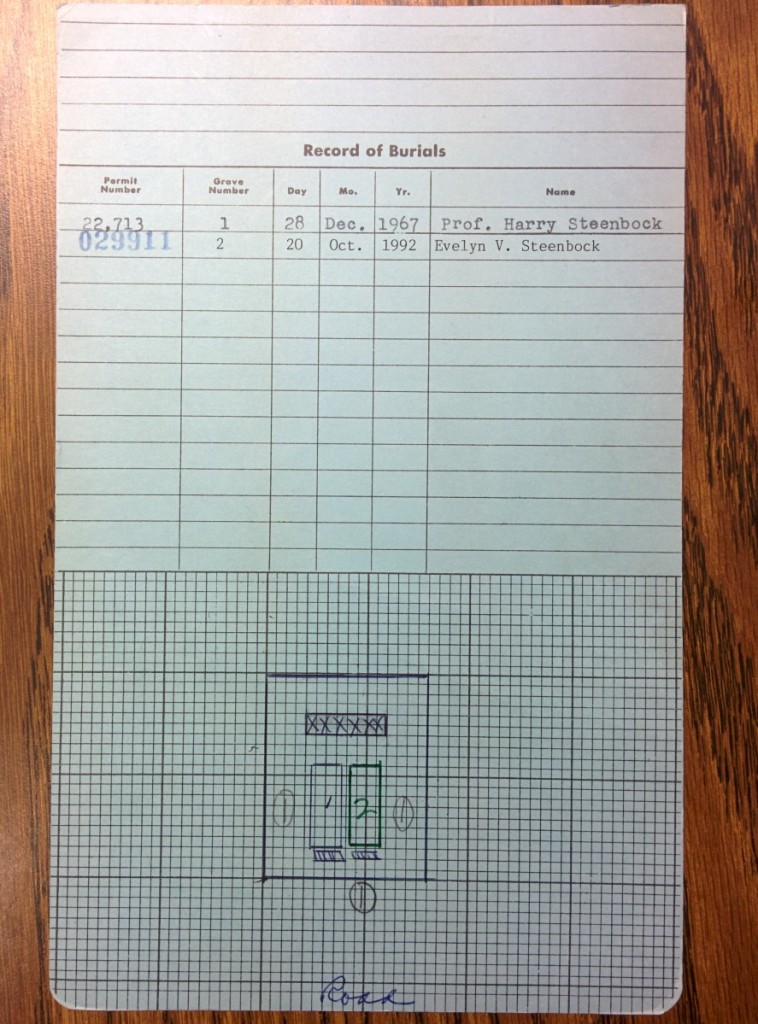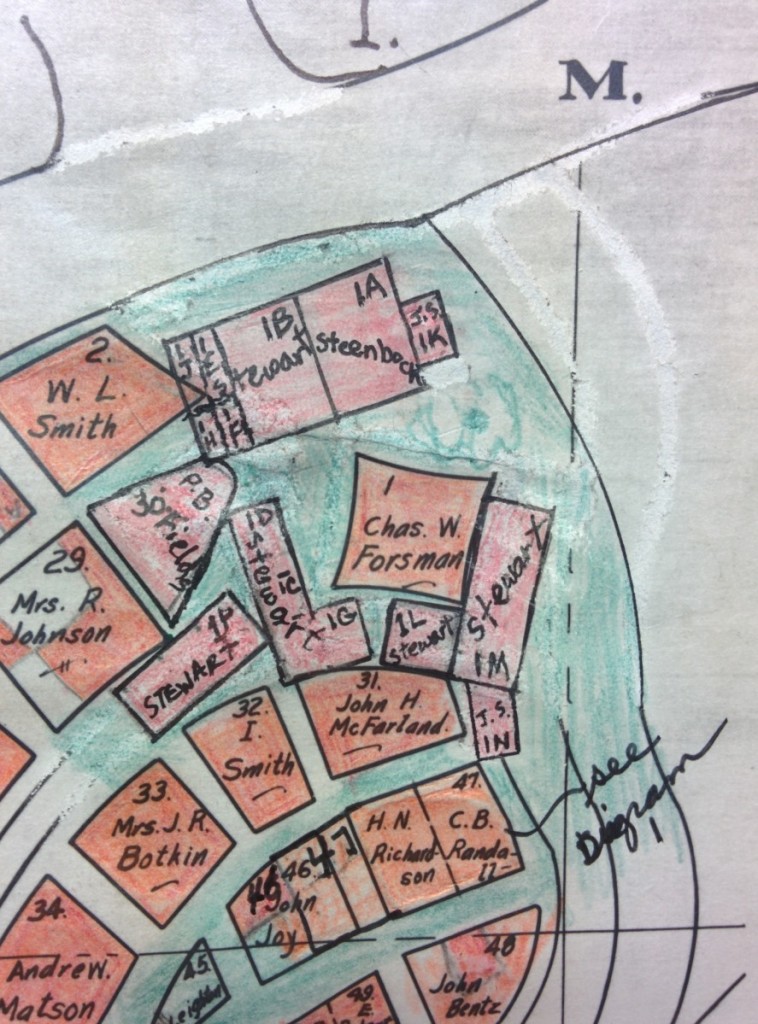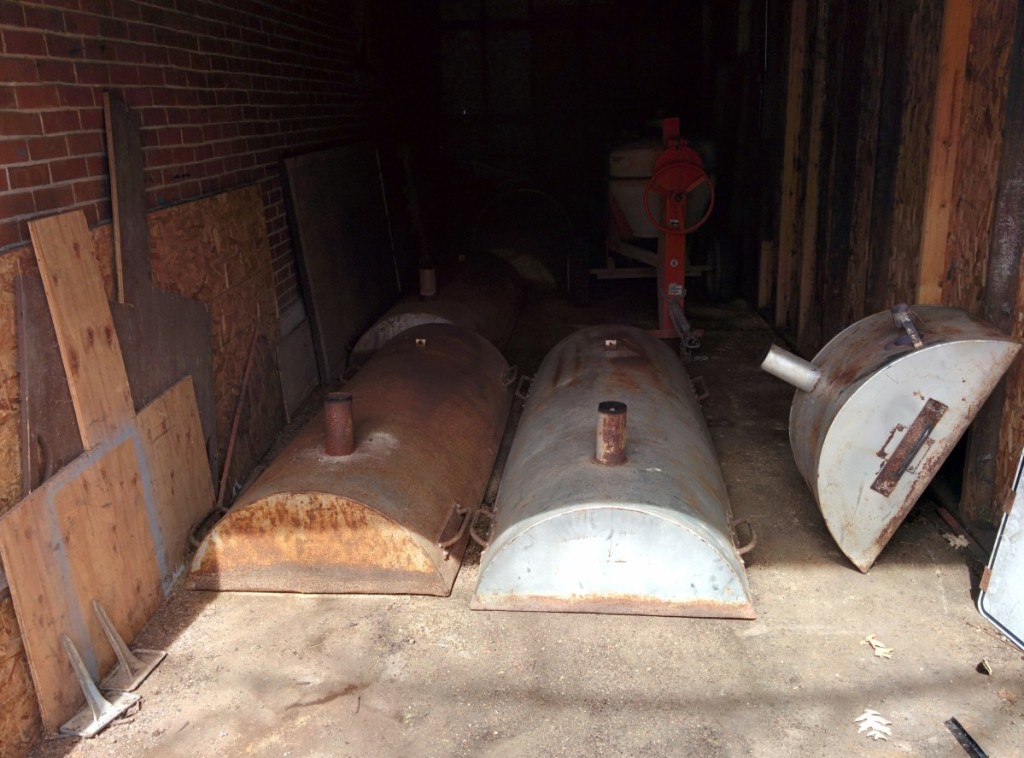The involvement of the cemetery staff begins in much the same way as the funeral director: with a phone call notifying them of a death. Those calls arrive at the desk of Karen Thompson in the cemetery’s main office, a converted streetcar station right by the entrance on Speedway road. Thompson carries the title of Program Assistant II in the City of Madison Parks Division, but she sees her job in a different light than most parks employees. She remembers having an interest in the mortuary profession from a young age and values her role in comforting family members during a difficult time.
Like Thompson, all Forest Hill employees work for the city but have somewhat different responsibilities than other municipal workers with similar job descriptions. Laura Bauer took over as cemetery supervisor last year when her predecessor, Kevin Sorenson, retired. Due to a recent Parks Department reorganization Bauer oversees not only the cemetery but all of West Parks, one of three geographical sectors in the Parks Division that includes multiple sites. As a result, some Forest HIll workers will split their time at other parks as needed. Besides Bauer, the supervisor, and Thompson, the program assistant, the staff also includes a Parks Operations Lead Worker, who coordinates the landscaping operations, an Equipment Operator II, who runs the backhoe to dig the graves, and three full time maintenance workers, who assist with the digging and the daily upkeep of cemetery property.
During the summer months, Bauer has the budget to hire four additional seasonal workers, but those positions can be difficult to fill. She speculates that applicants might be reluctant to take the job due to its grim associations with death, or because of the vast amount of trimming involved. The hours of repetitive labor required to trim the grass around each individual gravestone, according to Bauer, can “drive you out of your mind.”
When Karen Thompson takes the first phone call from a funeral director or from a family member, she first determines if the deceased already owns a plot. If they do, then she turns to her filing cabinet full of notecards that record the location and financial information for each individual grave. Besides the name and contact information of the person who purchased the lot, the card includes the square footage, the number of the section within the cemetery, and the lot number within that section where the grave (or graves in the case of family lots) is located.
The cards also record the amount paid, the invoice on which the payment was received, and the portion that went towards perpetual care rather than the city budget. In standard practice, 40% of the total goes to an endowment designed to ensure the long-term upkeep of Forest Hill while 60% goes back to the general fund of the City of Madison. But specific amounts can vary according to the wishes of the buyer (for more on perpetual care funds, see Part 3: From Grave to Perpetuity).
Some of these cards have been in the office for a century. The newer ones come in green while the older ones are a faded, pale blue. Because the office organizes them by owner, some of the cards include information for an entire family. In that case, Thompson must determine the exact grave within the lot that will be receiving the incoming body. For that purpose, the reverse side of the card includes a list of each of the family members who have already been buried and a grid where the specific size and location of each grave can be drawn out.
The lot and section numbers on each card then correspond to a larger book that holds detailed maps for each cemetery section, labeled with the names of the owners of each lot. Typically, each owner, and therefore each card, will be assigned its own lot number.
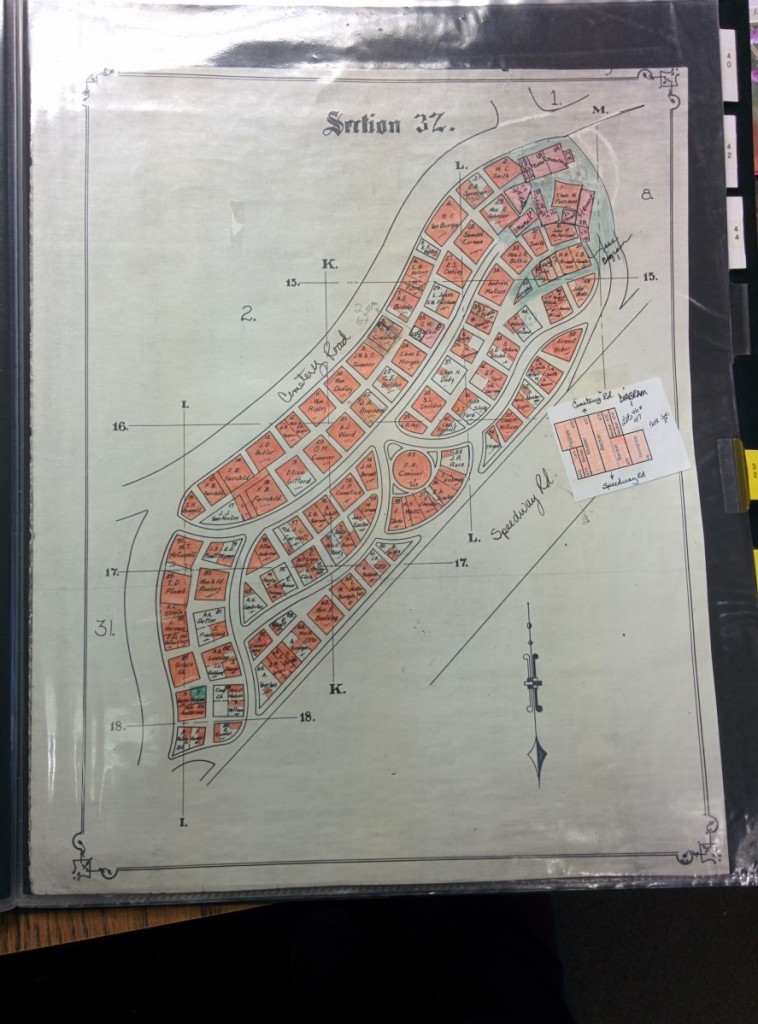
The map page for Section 32 with the Steenbock lot located at the top right. Photo by Kevin Walters.
If the incoming body has not already been assigned a grave, then Thompson works with the funeral director and the family to find an available location. At this point, every section of the cemetery has at least one grave filled and many others assigned for future burials. Several decades ago, Forest Hill added three new sections (numbers 39, 42, and 44, on the western edge bordering Speedway Road). The original plan allowed for expansion into additional land to the southwest, but the city decided to use much of that land to build Glenway Golf Course instead.
Bauer and Thompson confirmed that the numbers for each section appear to have been chosen randomly, or at least according to some impenetrable logic devised well before their time. But all of their mapping and locating procedures depend upon the established numbers.
They also estimated that less than three hundred graves remain unassigned. Around one hundred of those are designated for military burials in a section reserved for veterans and their spouses by Forest Hill. The Federal Soldier’s Lot, operated by the National Cemetery Administration in the U.S. Department of Veterans Affairs, no longer takes new interments. In years past, the federal government paid the Parks Division for maintenance of the Soldier’s Lot, but they now hire separate contractors to work the 0.36-acre area (for more on the different sections and available graves in Forest Hill see Zoning).
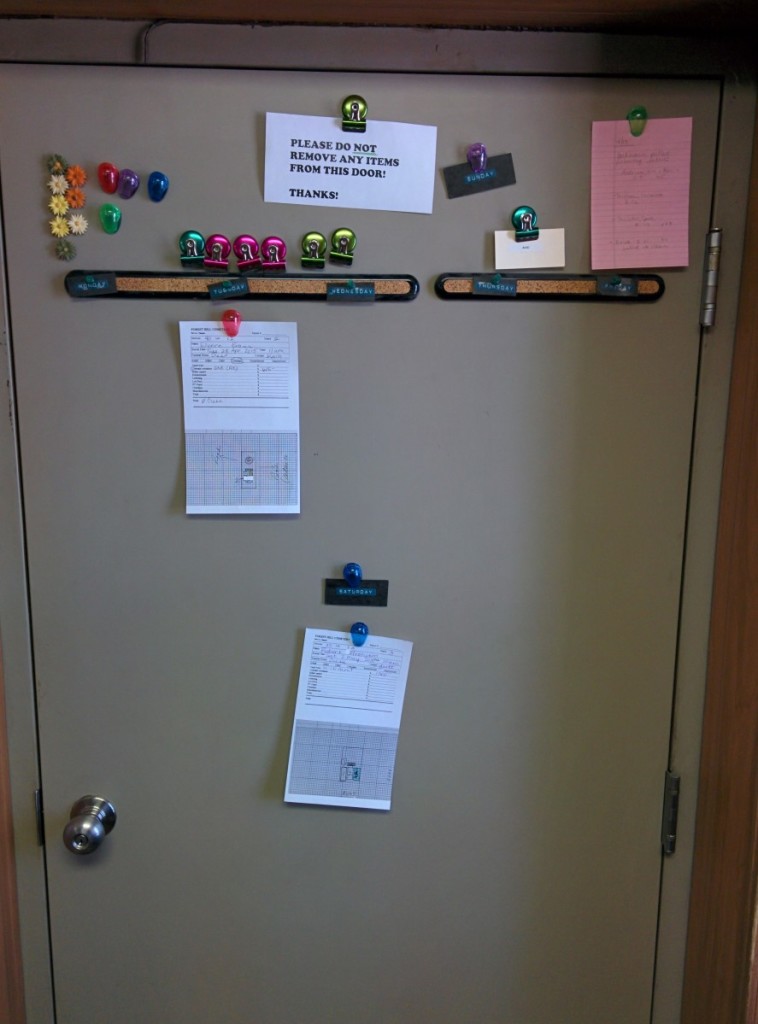
The back door of the Forest Hill office showing two burials scheduled for the week. Photo by Kevin Walters.
As soon as Thompson determines the specific location for the burial, she posts the notecard on the back door of the office according to which day the burial will take place. The door has six labels, one for each day of the week excluding Sunday. Cemetery policy requires at least eight working hours prior to a service in order to prepare the grave. However, they often receive notice several days in advance. During our visit, they had a burial scheduled for the following day, a Friday, but had dug the grave on Wednesday due to a forecast of rain. When possible, the staff tries to avoid the mud to keep the grave site clean.
The actual process of digging involves one to two hours of precise, practiced labor. Every assigned grave has been marked with cylindrical concrete stakes, about a foot deep and four inches in diameter, to mark each corner. The staff use these markers as a guide to build a grave four feet wide, ten feet long, and four and half feet deep (not “six feet under” as common lore would have it). The Equipment Operator uses a backhoe with a few modifications such as a specially designed shovel and outrigging legs that can be nailed to the ground for added stability. He scoops out dirt one layer at a time and in coordination with two workers on the ground who help guide the digging and corner off the grave with shovels. Once the hole has been finished, the staff lowers in a prefabricated vault that is purchased by the family and made of either concrete or, in rare cases, metal. The vault maintains the shape of the grave by separating it from the surrounding earth.
In winter months, the cemetery workers bring in dome heaters, powered by propane, to melt the layers of winter frost above any new graves. These curved, metal devices lay on the ground and cover the whole gravesite. The process takes one hour to thaw each inch of frost and generates an impressive amount of steam.
Before such technology existed, bodies that arrived during the winter months would have to be stored in a receiving vault, a stone building built on the cemetery grounds and designed for that purpose. In those days bodies might be stacked up to the ceiling by springtime.
In addition, up until the 1980s, Forest Hill housed a crematory behind the mausoleum on the cemetery’s property. Rolf Darbo, a real estate entrepreneur and inventor with fifteen patents to his name, reached an agreement with the city in the 1970s to own and operate the mausoleum. Anyone who bought a space there had the option to be cremated in a small building that Darbo had attached to the back. A few years after Darbo’s death in 1984, the property reverted back to the city and the cemetery decided to stop cremating bodies on site. Both the receiving vault and the old crematory still stand today but are used only for storage.
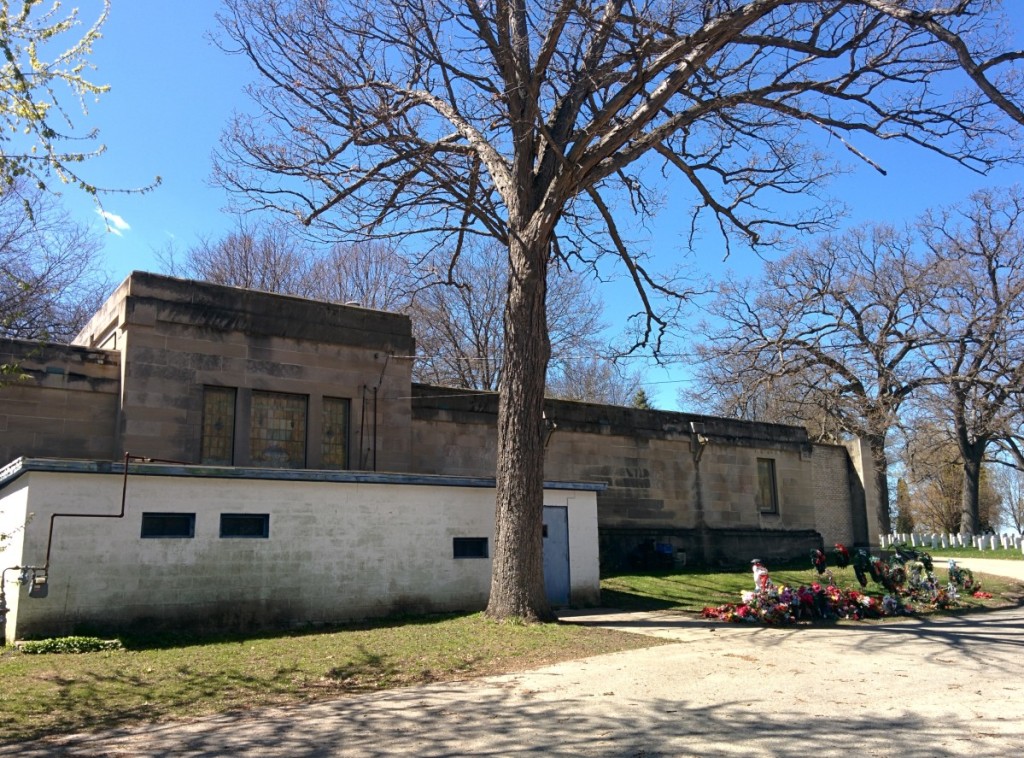
The white crematory building still stands behind the mausoleum. Decorations removed from the graves after the winter stand collected to one side. Photo by Kevin Walters.
With the grave dug and the vault inserted, the cemetery then waits for the arrival of the body. Forest Hill allows memorial services any day of the week and any time before sunset. However, they do charge overtime costs for weekends, holidays, and any other hours when staff would not already be working. Services can be held at graveside or, if the family purchased an above ground location for the casket or cremated remains, in the mausoleum. Forest Hill also offers the Catlin Memorial Chapel, but despite its beautiful stained glass windows and wooden pews few families choose to rent the chapel due to its small size.
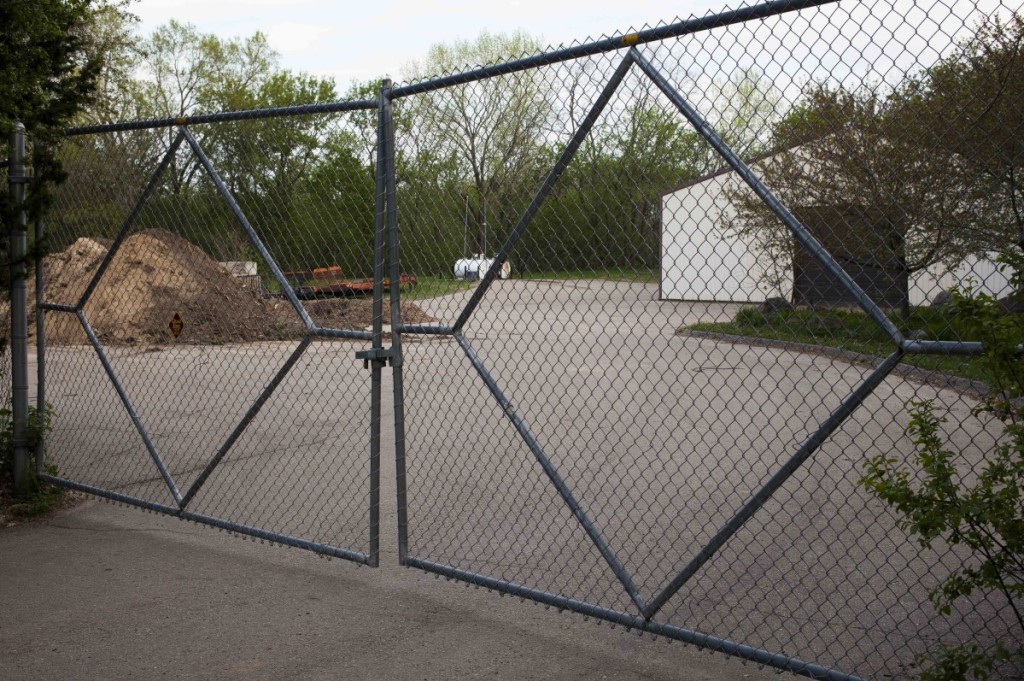
The storage shed at the back of the Forest Hill property with a pile of excess dirt to the left. Photo by Brad Baranowski.
After the service, the cemetery staff remain on site to close the grave. When possible, they roll up the grass so that it can be put back in place. Otherwise, they will seed the ground after the grave has been filled. Any leftover dirt gets transported to a large pile near the maintenance shed, where it can be distributed to other city parks. Otherwise, the soil and the sod will become part of the ongoing process of tiling and tending the final resting place of each body that comes to Forest Hill Cemetery.
Back to Top | A Body’s Journey Main Page | Part 1 | Part 3 | Alternative Journey
acknowledgements:
Karen Thompson and Laura Bauer at Forest Hill for sharing their knowledge of the cemetery.
Featured image at the top by Brad Baranowski. For more of his work go to http://www.bmbfotos.com.
